Great history of Natural Nation India
On

Prof Kusumlata Kedia
Seun Yadav dynasty
Nobody dared to attack India from 4th century BC to 11th century. During which, many countries in the world got defeat and success but India remained invincible because there was a tradition of mighty, courageous and strong emperors. India witnessed many emperors in that period. |
Seun Yadav ruled a major part of south India from 9th century to 15th century. Their empire was spread from Devgiri to Nasik. In 'Kale Gaon' of Mahadev Yadav, Godavari was called as ornament of Seun country. Ekamdev Yadav emperor'e empire was spread to Narmada river. Yadav ruled the region for 700 years and Muslim ruled the region for 100 years. (Yadav, earlier mentioned. Section 1, Part 2, Chapter 8 and 9)
Kakatiya dynasty
Kakatiya dynasty ruled from 11th century to 14th century. Kakatiya emperor Pratap Rudradev defeated Alauddin. Whose commander asked for help from Maharaja Ramdev and launched attack Kakatiya dynasty jointly. Maharaja Rudradev signed the treaty with him. (An Advanced History of India, Page 295-308, Macmilan New Delhi, Majumdar etc)
Vardhan dynasty
There was king Ishan Varman in the dynasty tradition of vedic era emperor Ashvapati. He set up huge empire in the mid of 6th century. He defeated Hun, Andhra, Shuliko and Gaur. He shares good relation with Magadh dynasty.
Later, there were Maharaj Nar Vardhan, Rajyavardhan, Adityavardhan, Prabhkarbardhan and Harshvardhan in the dynasty of Maharaj Pushyabhuti in Srikanth country. World famous Chinese traveller Hen sang has remembered them. Harshvardhan waged war with Gaur emperor Shashank. Harsh's sister Rajyasri got married to emperor Grih Varman who died during battle with Malwa. Vardhan ruled the Kanyakubj region. Emperor Harsh ruled the entire North India for 30 years. He used to donate heavily in Prayag mahotsav annually. When Tswan has described it. Great poet and kadambarikar Banbhatt has described his empire. (Devahuti: Harsh, A Political Study, Oxford, 1983)
Other great dynasty
Vakatak, Vashishtha dynasty, traikutak, Mathar, Nag dynasty, Aabhir ruled many empires. The area of each state was equal to that of England. It's clear that England never challenged Indian emperors. Because 50 England could be accommodated in India.
Even today, area of India is around 20 times to that of England.
After Maurya and Gupt dynasty, Gaur ruled Bengal and Odisha. Later Pal dynasty ruled them. Great Pal dynasty started in Bengal from 8th century. Around 18 great emperors ruled the state for 400 years. Later, Sen dynasty came to power there. It ruled Bengal, Bihar, Odisha and Eastern UP. There were great poet Jaidev and Halayudh in that period (during the regime of Maharaj Lakshman Singh). (Rameshchandra Majumdar, Section 4 and 5)
In 13th century, with 10000 Muslim horse riders, Bakhtiyar Khilji attacked famous education centre 'Nadia' of Bengal and butchered 50, 000 Buddhist monks. They also burnt huge library. (Majumdar)
Kamrup emperor got information of it. He attacked Bakhtiyar military and killed 9900 horse riders. He fled away from the battlefield.
Bakhtiyar burnt the library and killed many scholars on 1261 vikram samvat. Hindu kings ruled half part of India. It was Hindu kings who turned their religion. They became Muslims due to fear. (Majumdar)
Spread of East India Company in Bengal
East India Company borrowed loan from famous Jagat Seth of Bengal and started business. Palasi battle not happened. Jagat Seth defeated Sirajudaula.
The company got benefited from Hindu-Muslim rivalry. East India Company developed in Bengal. Murshid Kuli Khan was a Hindu who became Muslim to keep Aurangjeb happy. Auranjeb made him his deevan in Bengal. Murshid started to inflict pain to the Hindu kings who supported East India Company. Hindu kings ruled Vardhman, Midnapore, Vishnupur, Chandrapur, Krishna Nagar, Mangal Kot, Panchet, Sen Pahari, Katwa and Virbhum in 18th century. (Majumdar)
After death of king, Sufi Nur Ul Haq convinced his elder son to become Muslim. Hindu citizens also turned Muslim. Muslim king ruled the region for 24 years. Once again, Hindu religion spread there. (Legacy of Muslim Rule in India: Kishori Sharan Lal, Aaditya Delhi, 1992)
History has been extensively written in India and many evidences of writing history are available here . Therefore it was quite easy to write history here and we have a very old tradition of writing history in India. |
Reality of so-called Muslim era
There are so many false facts and misconceptions about Muslim effect in India that people forgot the facts. Post independence, those who wrote history for government-run educational institutions and entire education system, followed no universal norms.
Only internal truths of any country are the proof for writing history. European countries too follow this norms but our leftist or communist historians followed no norms. They provided a lots of materials to bring communist rule in the country. They touched no internal facts because they knew no Sanskrit language.
All the primary sources are available in Sanskrit language. They are also available in Tamil and other Indian languages. Historians had started to pen down history in English language first time in 20th century. Earlier, stories were deemed as history. In 1961, EH Kar in his book 'What Is History', defined history. He clearly said that history is to analyse in and around capital of any state. It was natural to say this because similar incidents happened in England while writing history. there were over 20 states in England till 20th century but due to promotion of a particular king, the people started to call kings of London and its surrounding areas as British emperors. Finally, they got success. (See: An Utterly Impartial History of Britain by John o''Farrel, Black Swan, London, specially chapter 4, 5, 6 and 7)
For the first time in aftermath of 19th century, British empire came to existence and at the same time several nations emerged. That's why writers started to write modern history in 19th and 20th century. Their yardstick was to give importance to central government and set up it. Analysing the incidents in this context is called history writing.
Problem created that there were few primary evidences for ancient history. History was imagined on the basis of those subjects like coins, bones and residue of other things are nothing but an imagination due to lack of written proofs. The people of Europe and England repeatedly write that it's assumption, it seems that etc. No authentic history can be written on the basis of 4 or 6 residue or part of bones or torn papers. Europe has no authentic evidences.
The condition of India is quite different from that of Europe. The writers have been writing vipul history in India since time immemorial. There were many internal evidences here. Therefore, it's easy to pen down real history here. It has a old tradition. Most of the tourists showered praise on India but at the same time, they started to demean Indians in 20th century when they thought that they can rule the country. They started to write false story about India. For example, Alexander Daw tried to call history of India during Muslim rulers as authentic. HM Elliot started writing history and highlighted his objectives.
लेखक
Related Posts
Latest News
01 Oct 2024 17:59:47
ओ३म 1. सनातन की शक्ति - वेद धर्म, ऋषिधर्म, योग धर्म या यूं कहें कि सनातन धर्म के शाश्वत, वैज्ञानिक,...




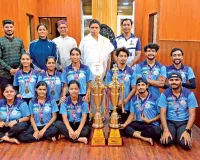

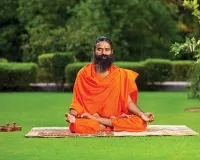
.jpg)


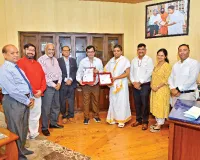



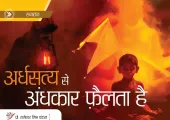


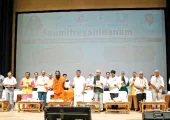

.jpg)
.jpg)
